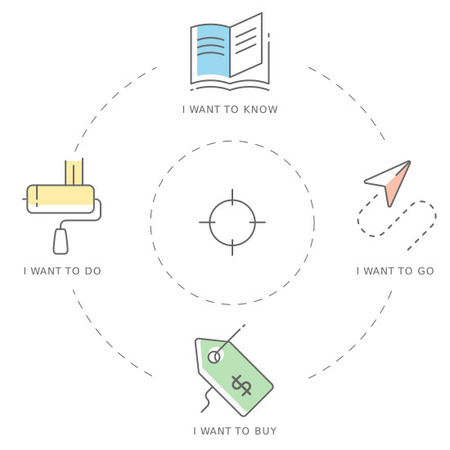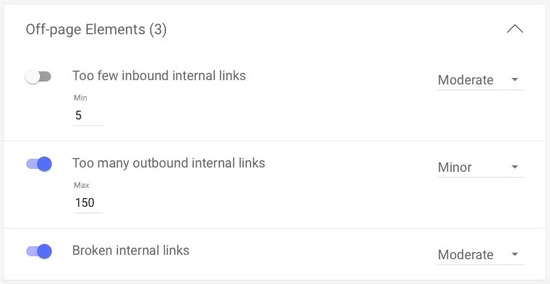Don't make these mistakes while making Smart Content
Making smart content can seem straightforward once you know the framework. We walk through five of the common but easy-to-miss mistakes. The Smart Content framework enables brands to increase content performance on SERPs, boost their share of voice, and get more high-intent customers to engage with their website content. The framework essentially works like a carpool lane, enabling brands to bypass the traffic congestion caused by too many sub-optimal content pieces, most of which are never discovered by their intended audiences. Offering a clear checklist that performance marketers can follow to make their content perform better, the Smart Content framework enables brands to differentiate their content and realize tremendous success. But there are a few mistakes you don't want to make while making Smart Content that you'll need to keep in mind as you take on improving your content ROI.
- Ignoring content goals and strategies
- Developing generic content
- Using rigid content molds
- Failing to add enough internal links
- Neglecting CTAs
1. Ignoring content goals and strategies
Often we see marketers who create SEO management plans and rush to pack new content pieces with SEO goodness, mobile best practices, and effective CTAs and in that mad dash minimize or ignore their overarching goals and the content strategies they would employ to achieve them. Content that is created ad hoc with no thought of how it is supposed to serve a bigger purpose than just getting more website visits isn’t smart - no matter how much it was optimized. The reason for that is that content pieces rarely work in isolation. You need to create a cluster of content pieces that, when crawled and indexed, can position your site as an authoritative domain. And so the first thing to do is to figure out what is your concrete goal for the content. Here are a few goals and their accompanying content strategies:
| Goal | Strategy |
| Become known as a thought leader on a new topic | Prioritize topics that are featured in Quick Answer boxes |
| Create awareness for a new retail location | Prioritize topics that are location-sensitive |
| Show quick content ROI to justify bigger investment | Prioritize topics with high demand (search volume) and weak competitive authority |
Watch our B2C webinar and B2B webinar recordings for more information.
2. Developing generic content
We see this problem a lot: the brand discovers a need to develop thought leadership in a new subject, so it develops an overly broad 3,000-word encyclopedic dissertation about anything and everything that can be said about the subject. Bad idea. Smart Content writers need to think about the top-of-funnel, which is the new search engine results page. This is the best place to establish thought leadership in a new subject - as an auction house. The search engine effectively auctions its users to content writers. It looks for content that can best address the needs of each searcher. It ranks the content based on how it anticipates the content to meet the need. And so, when given the task to conquer a new subject, writers must first identify the full list of intents that customers may have related to the subject. They can use the Google micro-moments framework to identify queries that represent I-want-to-know, I-want-to-go, I-want-to-do, and I-want-to-buy intents.  Once they divide their topics into these four groups, writers should develop a taxonomy of parent and child topics, which their content items will address as a unified cluster. They can determine the type of content they should develop for each intent. By following this approach, writers can more accurately target specific customer intents and increase the likelihood of winning more SERP auctions.
Once they divide their topics into these four groups, writers should develop a taxonomy of parent and child topics, which their content items will address as a unified cluster. They can determine the type of content they should develop for each intent. By following this approach, writers can more accurately target specific customer intents and increase the likelihood of winning more SERP auctions.
3. Using rigid content molds
When fully embracing the Smart Content framework and making smart content, there’s sometimes the tendency to templatize and systematize everything, including copy. Writers lock in on a certain style and tone and produce content that follows a rigid structure even when varying their content topics considerably. While this process speeds up production, it can lead to publishing content that might be targeting specific intent but falling short in addressing it. The key thing to remember here is the need of the readers and their intent behind the search. Some intents, such as “go get a flu shot,” can be addressed with a short and simple store locator page. Other intents, such as “learn to develop a progressive web app,” must be addressed with much longer and more complex content. Instead of using a rigid content mould, writers should vary the characteristics of their content based on the underlying intent that the content is to address. Content should vary on at least three measures: its length, readability level (the Flesch–Kincaid test can help), and keyword density (how often semantically related keywords repeat themselves). How can writers tell the right length, readability level, and density for each topic? The best thing to do is to examine the top-ten content items that rank on the SERP for that topic and average them out. Solutions like BrightEdge Content can do this work for you.
4. Failing to add enough internal links
When making Smart Content, your creations perform partially because it’s highly discoverable. Search engine bots and website visitors must be able to find new content quickly and understand how it relates to the rest of the content on the site. The more internal links are pointing to and from each content item, the more easily these content items are found. The problem is that marketers who work on large domains cannot retain in their heads the full taxonomy of their site and make good judgement calls on how to deploy internal linking. It’s often the case that marketers ignore internal linking, leaving it to their SEO colleagues to add them in later.  To increase content quality, writers should deploy automation that acts like a content coach, evaluating the content as writers type it, identifying anchor text that can be used to link to existing, high-quality site content, and even auto-generating the links. Moreover, automation backed with an AI-powered machine or deep-learning element can help to refine those evaluations based on past experience and shifts in a brand's objectives. Moreover, writers should regularly check their site not just for orphan pages but also for ones that do not include a good amount of body links. Website audit solutions such as BrightEdge ContentIQ can help catch and resolve pages that do not meet a predefined threshold of number of internal links.
To increase content quality, writers should deploy automation that acts like a content coach, evaluating the content as writers type it, identifying anchor text that can be used to link to existing, high-quality site content, and even auto-generating the links. Moreover, automation backed with an AI-powered machine or deep-learning element can help to refine those evaluations based on past experience and shifts in a brand's objectives. Moreover, writers should regularly check their site not just for orphan pages but also for ones that do not include a good amount of body links. Website audit solutions such as BrightEdge ContentIQ can help catch and resolve pages that do not meet a predefined threshold of number of internal links.
5. Neglecting CTAs
Performance is at the heart of the Smart Content framework. It is true that we develop fresh content to inspire and inform our prospects and customers, but content needs to drive performance and results. Ultimately, we want readers to be inspired and informed enough so that they can take concrete actions to become customers, loyalists, and champions. We want them to take specific steps while consuming content, and we must make sure these steps are abundantly clear. Marketers must therefore keep thinking about the next action they want their readers to take while new content is conceived and developed. Every content piece should directly lead to conversion points on the site. This can be done by incorporating highly visible call-to-action (CTA) snippets or even lead generation forms into the copy to point readers in the right direction. Obviously not all readers will be ready to engage or convert having read one article. It’s critical, therefore, to insert relevant content recommendations at the bottom of the page to reduce site abandonment and keep readers clicking and reading more. Content recommendations are like a safety net for CTAs. The Smart Content framework is a great tool to accelerate content performance at scale and increase website visits, conversions, and revenue. But writers and strategists should keep these gotchas in mind to ensure their framework implementation achieve the desired results.


